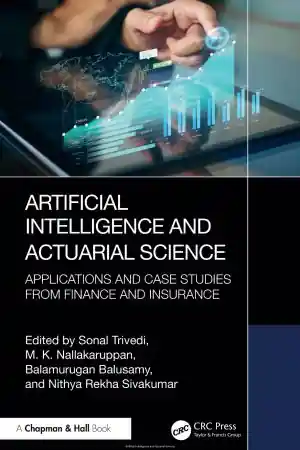
Mastering Text Mining with R
- Length: 288 pages
- Edition: 1
- Language: English
- Publisher: Packt Publishing
- Publication Date: 2017-01-05
- ISBN-10: 178355181X
- ISBN-13: 9781783551811
- Sales Rank: #1813829 (See Top 100 Books)
Key Features
- Develop all the relevant skills for building text-mining apps with R with this easy-to-follow guide
- Gain in-depth understanding of the text mining process with lucid implementation in the R language
- Example-rich guide that lets you gain high-quality information from text data
Book Description
Text Mining (or text data mining or text analytics) is the process of extracting useful and high-quality information from text by devising patterns and trends. R provides an extensive ecosystem to mine text through its many frameworks and packages.
Starting with basic information about the statistics concepts used in text mining, this book will teach you how to access, cleanse, and process text using the R language and will equip you with the tools and the associated knowledge about different tagging, chunking, and entailment approaches and their usage in natural language processing. Moving on, this book will teach you different dimensionality reduction techniques and their implementation in R. Next, we will cover pattern recognition in text data utilizing classification mechanisms, perform entity recognition, and develop an ontology learning framework.
By the end of the book, you will develop a practical application from the concepts learned, and will understand how text mining can be leveraged to analyze the massively available data on social media.
What you will learn
- Get acquainted with some of the highly efficient R packages such as OpenNLP and RWeka to perform various steps in the text mining process
- Access and manipulate data from different sources such as JSON and HTTP
- Process text using regular expressions
- Get to know the different approaches of tagging texts, such as POS tagging, to get started with text analysis
- Explore different dimensionality reduction techniques, such as Principal Component Analysis (PCA), and understand its implementation in R
- Discover the underlying themes or topics that are present in an unstructured collection of documents, using common topic models such as Latent Dirichlet Allocation (LDA)
- Build a baseline sentence completing application
- Perform entity extraction and named entity recognition using R
About the Author
Ashish Kumar is an IIM alumnus and an engineer at heart. He has extensive experience in data science, machine learning, and natural language processing having worked at organizations, such as McAfee-Intel, an ambitious data science startup Volt consulting), and presently associated to the software and research lab of a leading MNC. Apart from work, Ashish also participates in data science competitions at Kaggle in his spare time.
Avinash Paul is a programming language enthusiast, loves exploring open sources technologies and programmer by choice. He has over nine years of programming experience. He has worked in Sabre Holdings , McAfee , Mindtree and has experience in data-driven product development, He was intrigued by data science and data mining while developing niche product in education space for a ambitious data science start-up. He believes data science can solve lot of societal challenges. In his spare time he loves to read technical books and teach underprivileged children back home.
Table of Contents
Chapter 1. Statistical Linguistics with R
Chapter 2. Processing Text
Chapter 3. Categorizing and Tagging Text
Chapter 4. Dimensionality Reduction
Chapter 5. Text Summarization and Clustering
Chapter 6. Text Classification
Chapter 7. Entity Recognition







